Refraction of Light
Hand Written Note Download PDF
Topics To Be Covered
- Definition
- Mediums and types
- Refractive index and types
- Refraction on rectangular glass slab
- Lateral displacement
- Refraction on curved surface concave and convex lens
- Ray diagrams in concave and convex lens
- Image formation in concave and convex lens
- Critical angle
- Total internal reflection and application
Refraction
When ray of light incident on the transparent surface then it passes from one medium to another medium, this phenomena of light is called refraction of lights.
Medium:-
It is a material or substance through which wave or energy transmitted, called medium.
★ In optics. there are two types of medium
- Rarer medium
- Denser medium.
1) Rarer medium :-
i) It has less density.
ii) It has less no. Of particles
iii) Speed of Light is more
2) Denser medium:
i) It has more density
ii) It has more of no particles
iii) speed of Light less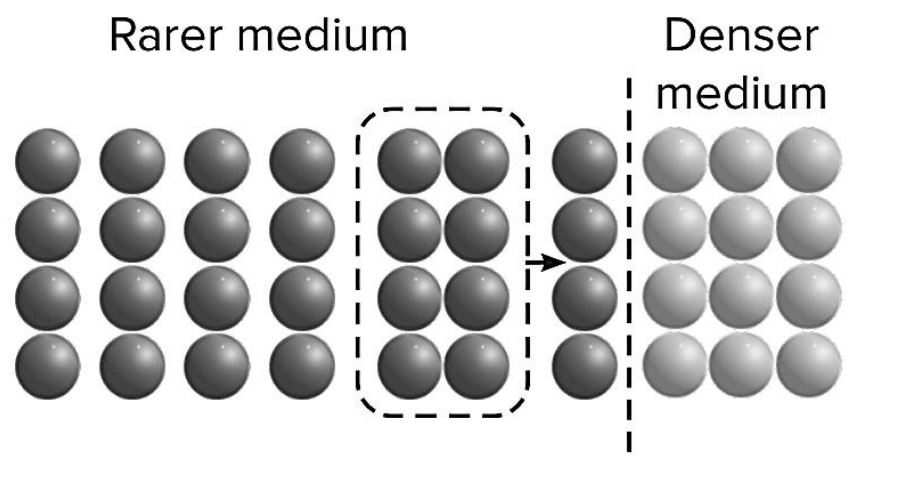
• When ray of light passes from one medium to another medium, then any one medium is rarer with respect to another medium and vice-versa.
Law of Refraction
There are two laws of refraction:
1st Law:
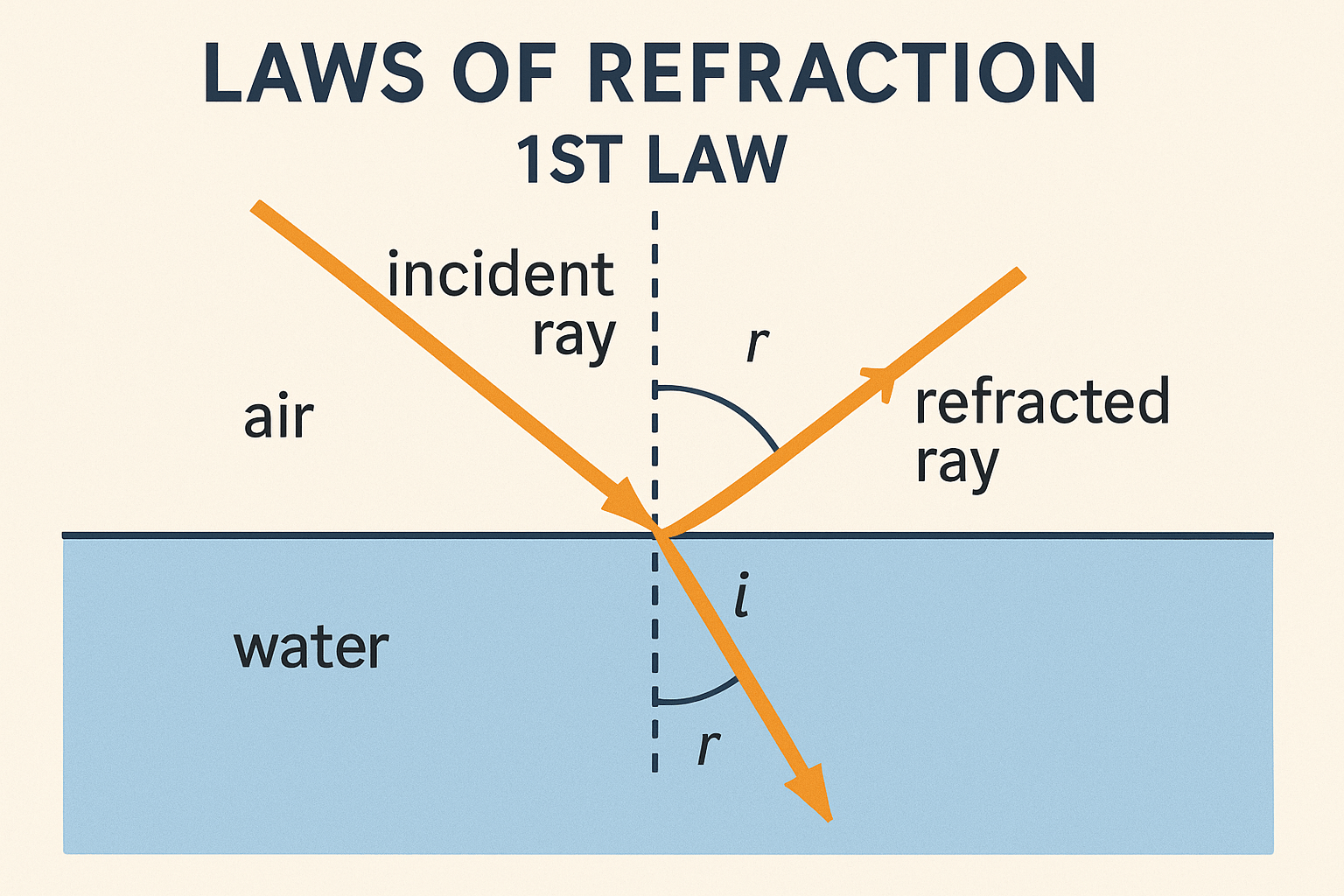
Incident ray, refracted ray & normal all lie in the same plane and at the same point of incidence.
2nd Law:
The ratio of sine of angle of incidence to the sine of angle of refraction is called constant.
2nd law of refraction is also known as Snell’s Law.

Here, μ is a constant called refractive index.
The value of this constant varies according to the medium.
Refractive Index (R.I.)
• It is the ratio of speed of light in vacuum to that of in the medium.
• It is ratio of wavelength of light in vacuum to that of the medium.
Refractive Index [R.I.] =



There are two types of refractive index:
1. Absolute Refractive Index
It is the ratio of R.I of vacuum W.R to medium
It is denoted by μ
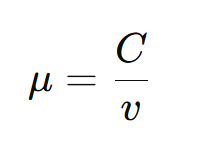
μ ( Vacuum ) = 1
μ (air) = 1.0008
μ (water) = 1.3 ≈ 4/3
μ (glass) = 1.5 ≈ 3/2
μ (diamond) = 2.42
2. Relative Refractive Index
It is denoted of μ₂¹ or μ₂₁
• μ₂¹ means R.I. of medium 2 by R.I. of medium

⇒ R.I has no unit
Key points
• Absolute R.I. is always equal to greater than 1
• Relative refractive index may be less than 1, more than or equal to 1
For surface PQ
Incident ray = AB
Refracted ray = BE
Ray of light coming from rarer to denser medium
For surface ST
Incident ray = BE
Refracted ray = CD
1. Emergent ray :-
The ray of light which leaves the rectangular glass slab after refraction is called Emergent ray.
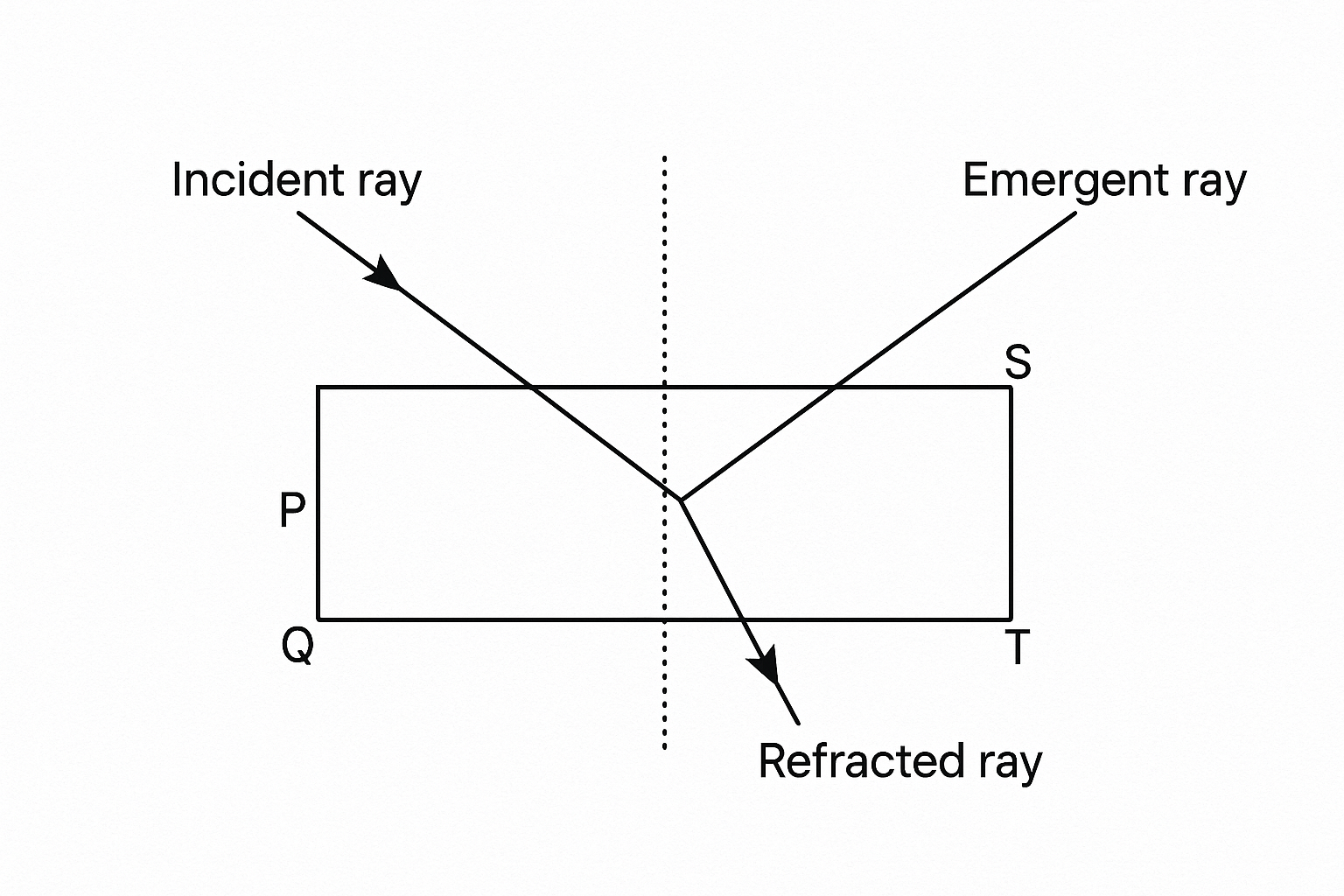
2. Angle of Emergence :-
Angle between normal and emergent ray is called angle of emergence.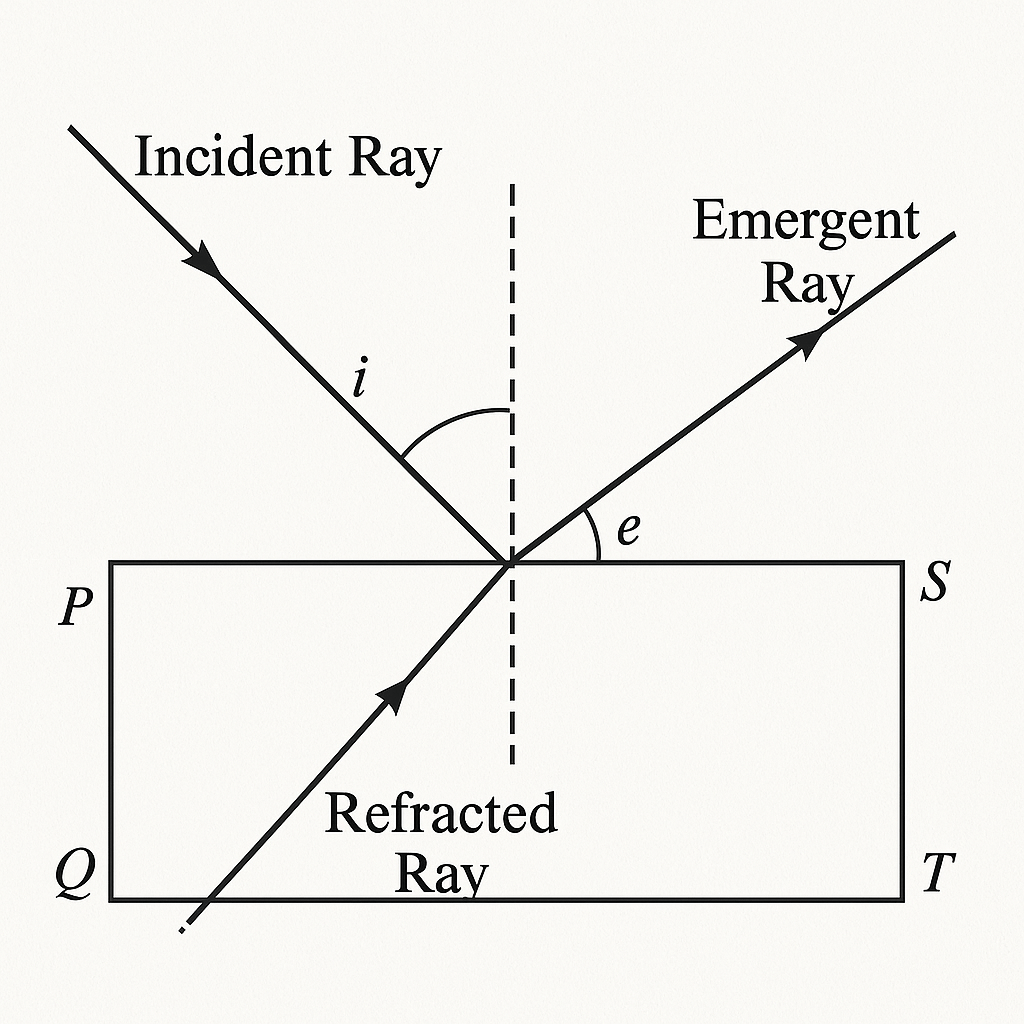
Lateral Displacement :-
It is the perpendicular distance between incident ray and emergent ray.
𝑂𝐷=𝑡 ⋅ sec 𝑟 ⋅ sin(𝑖−𝑟)
• S.I. unit of lateral displacement is m.
Where:
t = Thickness of glass slab
i = ∠ of incidence
r = ∠ of refraction
Factors Affecting Lateral Displacement
i) Angle of incidence
↑ i L.D ↑↑
ii) Thickness of glass slab
t ↑↑ L.D ↑↑↑
iii) Nature of material or Refractive index of material
Refraction on Curved Surface
Lens: :- It is a transparent refracting material.
• It is made of Glass / Quartz.
Spherical lens:- It is a refracting material which is a part of hollow sphere.
These are two types of spherical lens
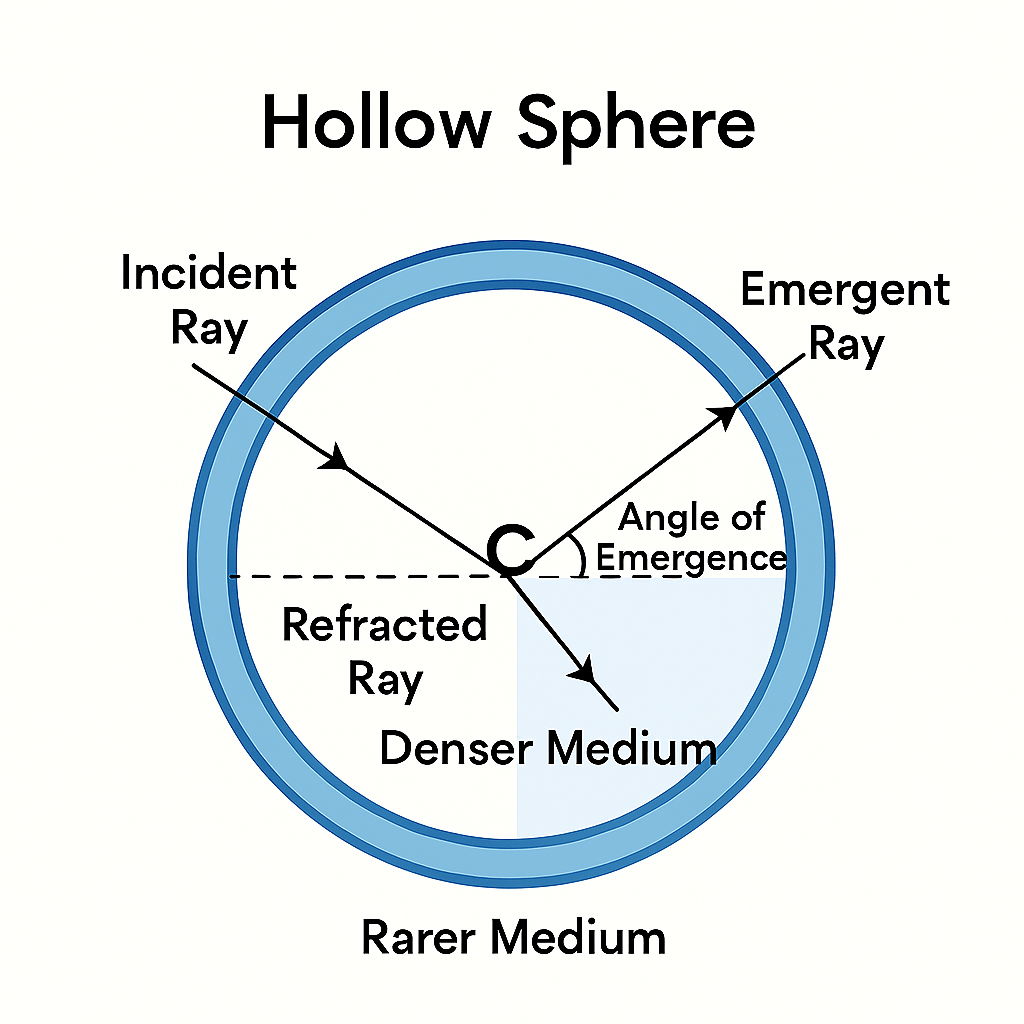
Convex lens
Concave lens
(1) Convex lens :-
It is a part of hollow spherical lens which is thin at ends and thick at middle.
★ It is a converging lens.
★ It has real principal focus.
★ Its focal length is positive. It forms both real and virtual images.
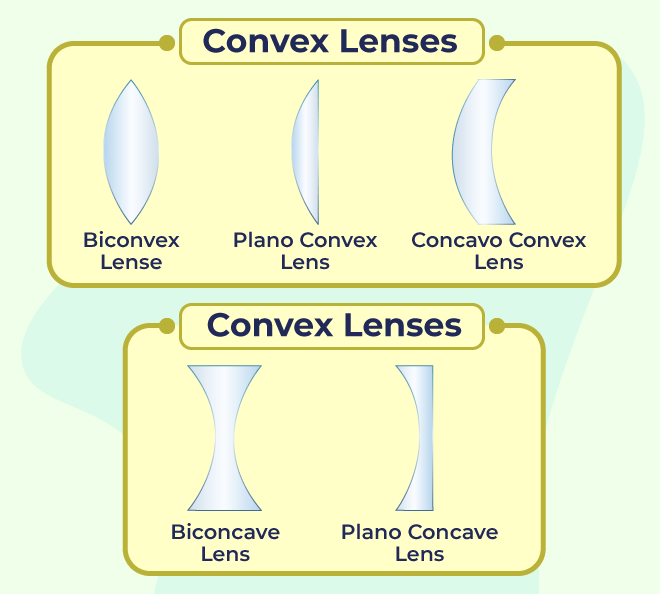
(2) concave lens :-
★ It is a diverging lens.
★ It has virtual principal focus.
★ Its focal length is negative
★ It forms only virtual and erect image.
Types of Concave lens:
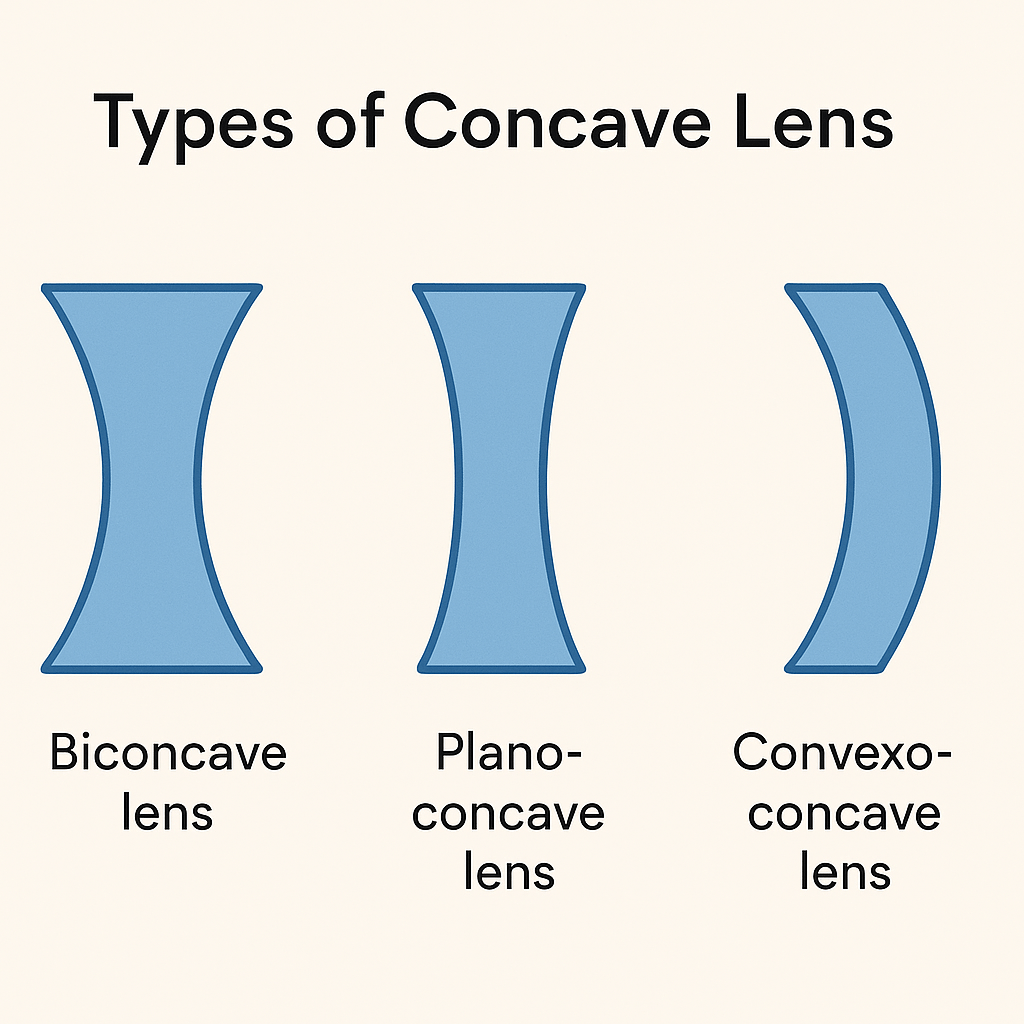
(i) Plano Concave
(ii) Convex Concave
(iii) Bi-Concave
Terminology
(1) Optical Center (O):
• It is the center of spherical lens. It lies on the principal axis.
• All the distances on the principal axis are measured from optical center.
(2) Principal Axis (XY):
• A line which joins center of curvatures and passes through optical center. It is an imaginary line.
Principal Focus:
• It is a point on the principal axis where ray of light after refraction either actual intersect or appears to intersect the principal axis.
• A lens has two foci
⑴ Primary focus: It is denoted by f₁.
⑵ Secondary focus : Principal focus: It is denoted by f₂.
Focal Length (f):
It is the distance between principal focus and optical center.
f = OF [ S.I. unit of focal length is meter ]
f ( convex lens ) = +ve
f ( concave lens ) = -ve
Image formation in Concave lens
There are 2 methods to form images in concave lens:
1st:-
When an object is placed at infinity
then its real, inverted and highly diminished image is formed at principal focus F2.

2nd:-
When an object is placed between optical center and infinity then virtual , erect and diminished image is formed between optical center and principal focus.
Rules for Ray Diagrams in Concave Lens
1st : A ray parallel to principal axis incident on the surface of concave lens, then the refracted ray will be appeared to pass from principal focus.
2nd : A ray of light appears to originate or pass from primary focus, then the refracted ray will be parallel to principal axis.
3rd : A ray of light parallel incident on the concave lens along optical center, then the refracted ray will pass without any deviation
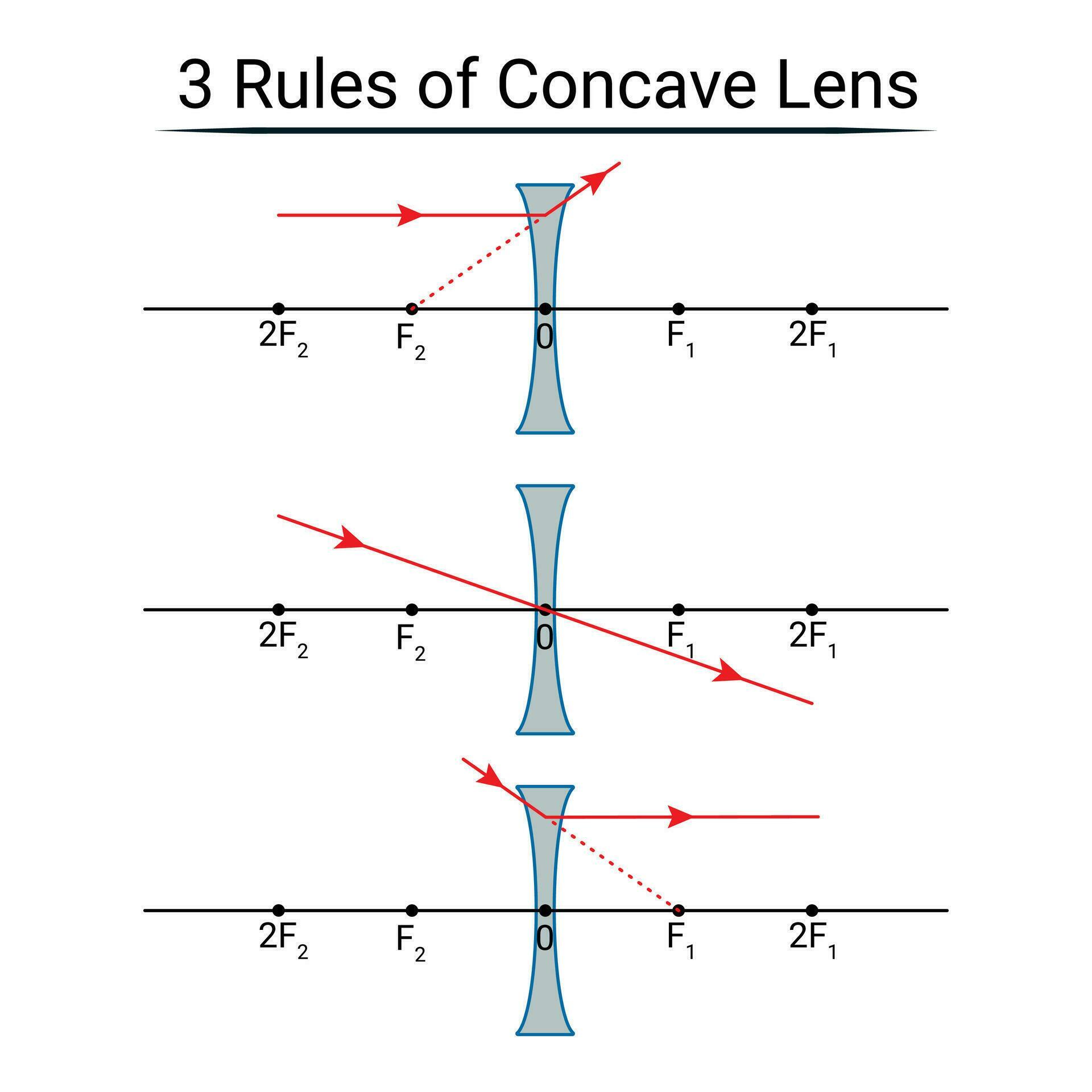
Image is formed between optical center (O) and principal focus
Sign Convention in Lens:
1. All the distances are measured from optical center on the principal axis.
2. Distance measure right of optical center on the principal axis is positive and vice-versa.
3. Perpendicular distance measure above principal axis is positive and vice-versa.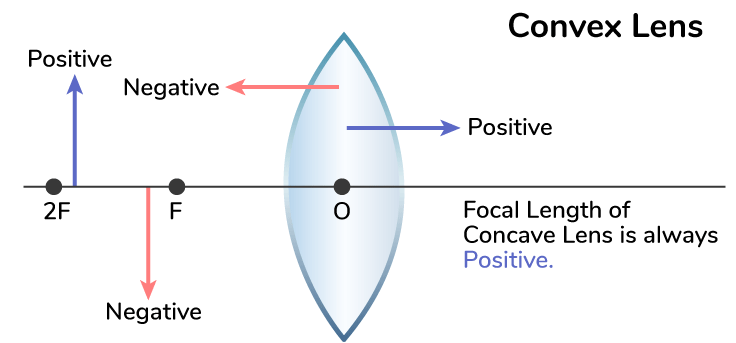
Image Formation in Convex Lens

There are 6th methods to form images in convex lens
1st:When an object is placed at infinity then its real, inverted and highly diminished image is formed at principal focus F2
2nd:When an object is placed beyond 2F, (primary C.O.C), then its real, inverted and diminished image is formed between F₂ & 2F2
3rd :When object is placed at 2F₁ (primary C.O.C) then its real, inverted and same size of image is formed at 2F₂ (secondary C.O.C).
4th :When object is placed between F₁ & 2F₁ then its real, inverted and enlarge image is formed beyond 2F₂ (secondary C.O.C)
U < V
H₀ < Hᵢ
5th:When object is placed at F₁ then its real, inverted and highly enlarged image is formed at infinity
Key Point: When object is placed at F₁ (primary focus) then its image will be vanished.
6th: When object is placed between optical center (O) and primary focus (F₁) then its virtual, erect and enlarged image is formed on the same side of object.
Rules for Rays diagram in Convex lens
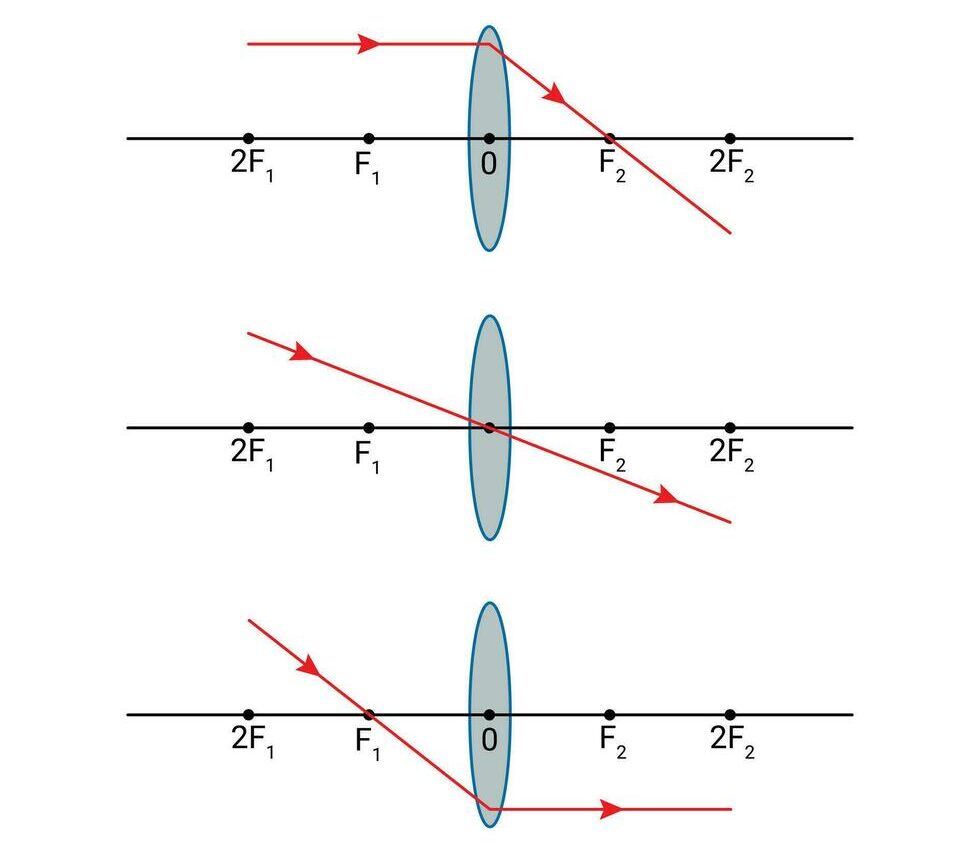
1) When a ray of light parallel to principal axis incident on the surface of Convex lens, then it will pass through principal focus F2.
2) When a ray of light passes through primary focus, then the refracted ray will be parallel to principal axis.
3) When a ray of light passes through optical center, then the ray will not deviate after refraction.
Critical angle (ic):
When rays of light travel from denser to rarer medium, therefore the value of angle of incidence at which angle of refraction is 90°.
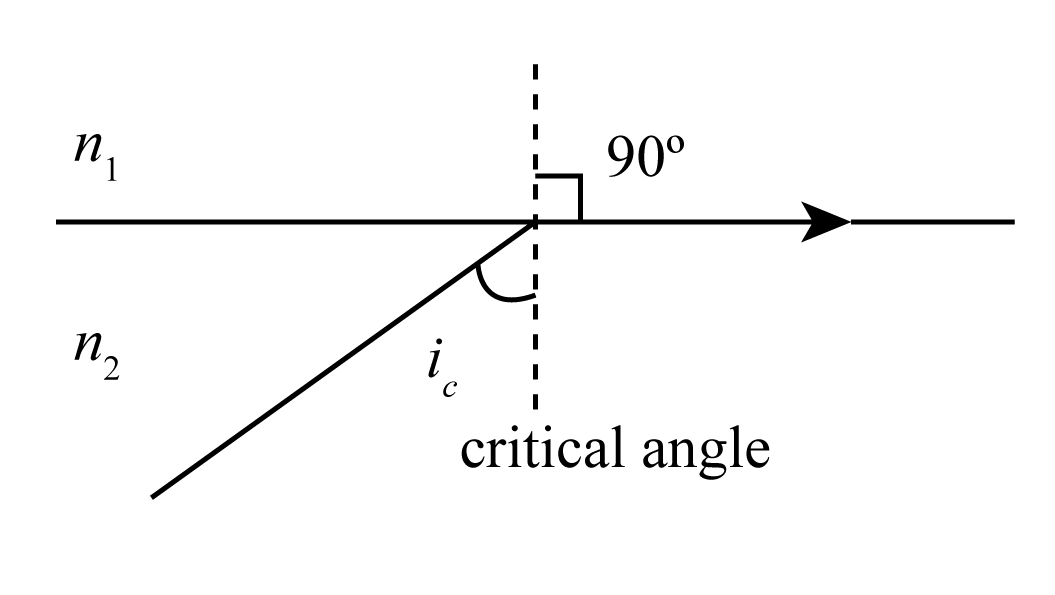
Total Internal Reflection (T.I.R.):
• When rays of light travel from denser to rarer medium, if angle of incidence is greater than critical angle, then the ray of light will reflect in the same medium. The phenomenon of light is called Total Internal Reflection.

Application of T.I.R.
i) Sparkling of Diamond

ii) Mirage
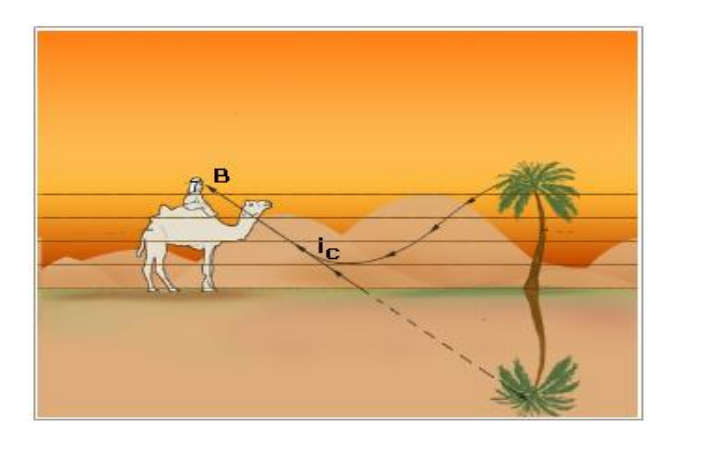
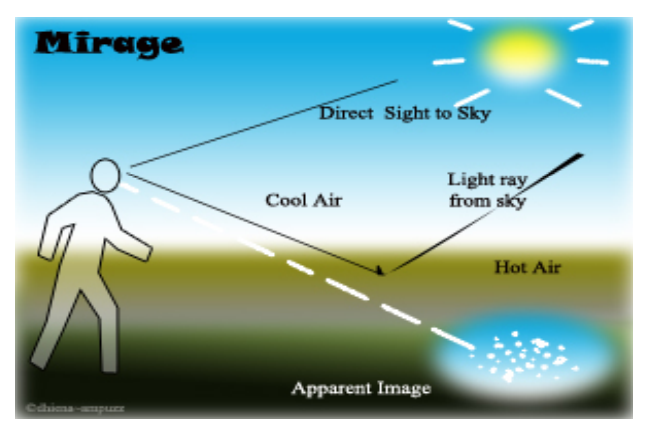
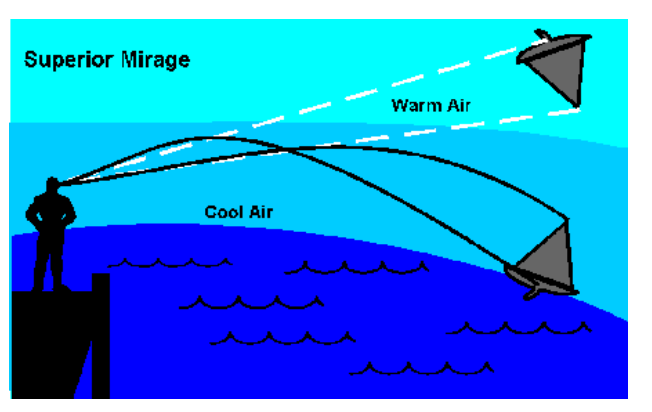
iii) Optical fiber
For ex.: jio fiber, airtel, extreme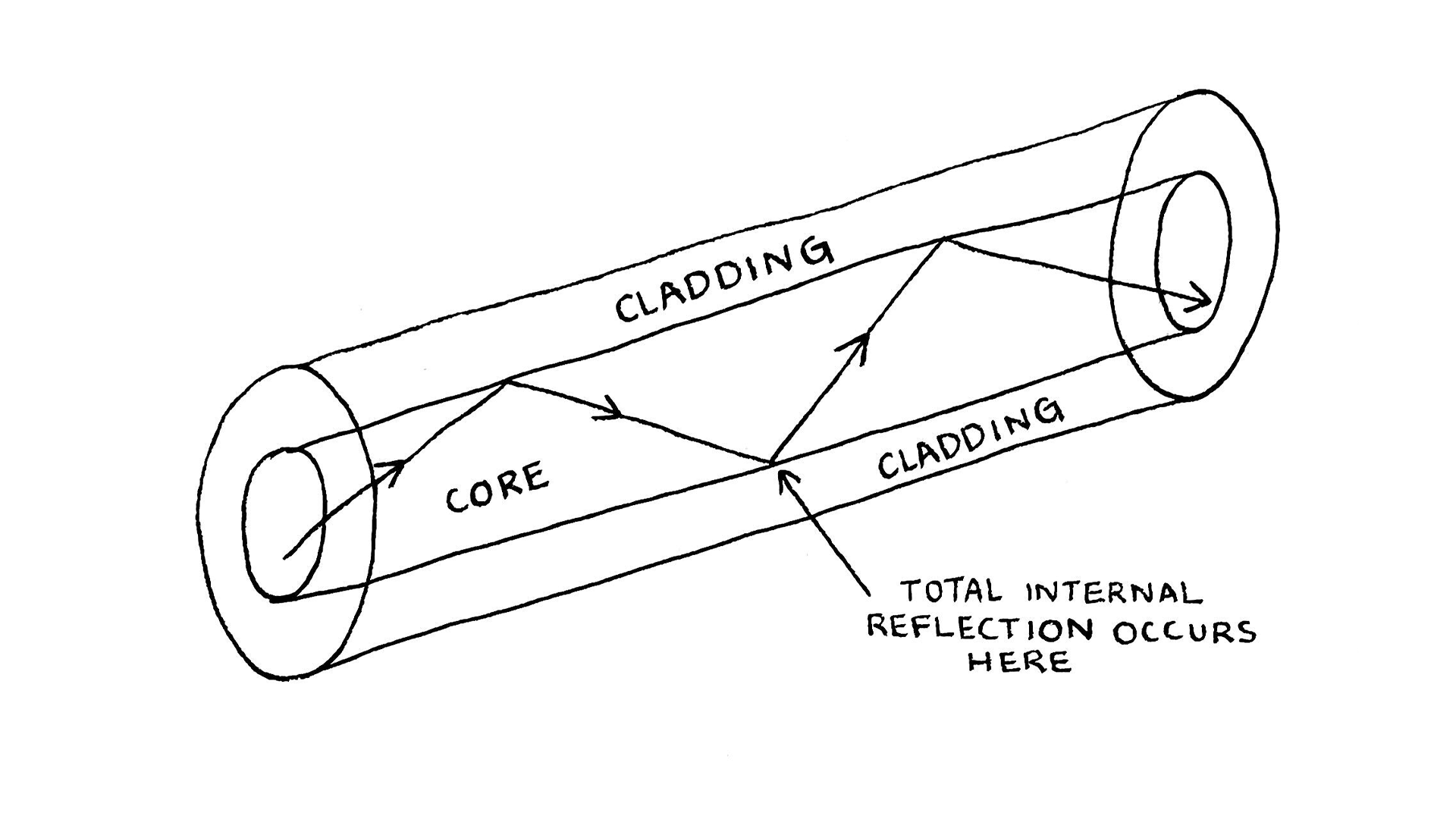
Home – View
Official Website- Physics Wallah
iOTA CLASSES has been working for the last 6 years at youtube ( online mode) but from last year ( 2024) we are running both online and offline,
With the cooperation of students , parents , our colleagues and team, we have gained satisfactory results,
And working more enthusiastically for the better aspirations. image of 2024 class 10th result [CBSE and BSEB( ENG. Med)]


